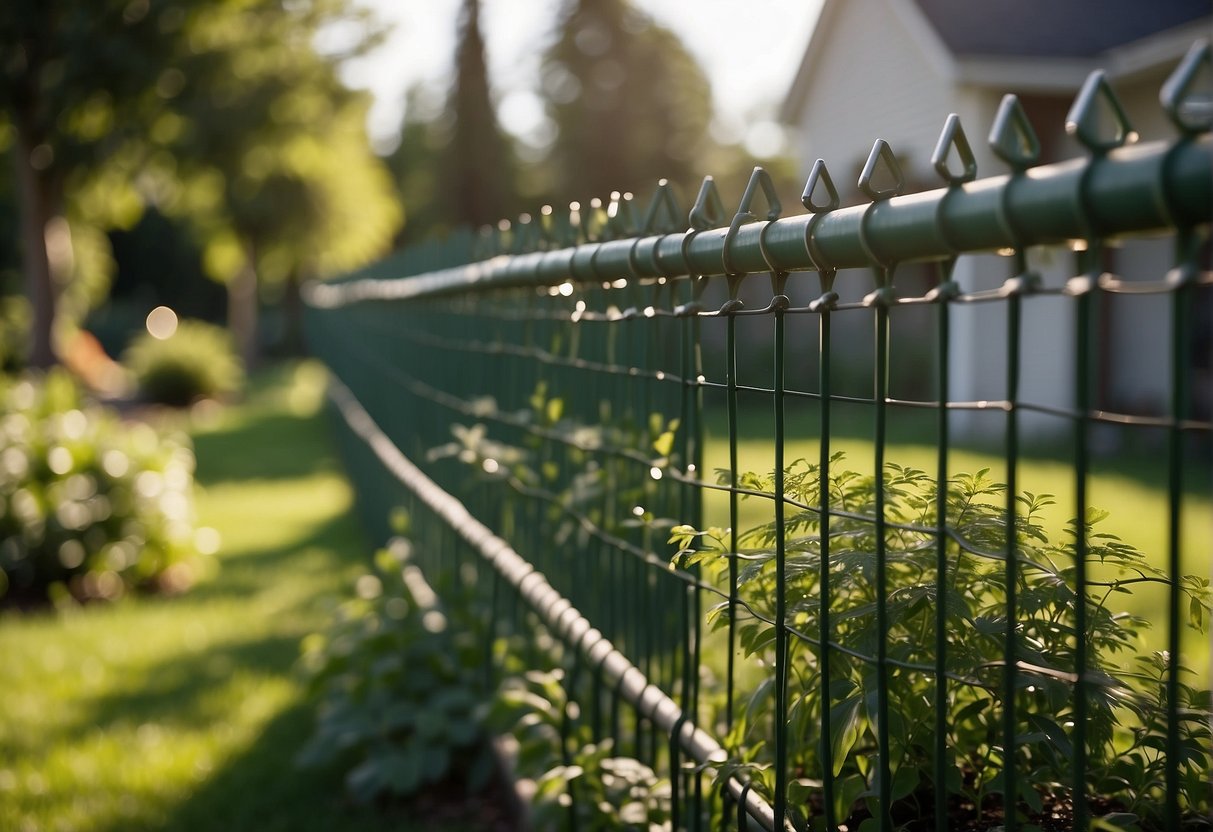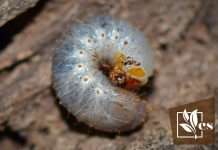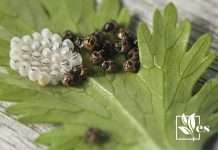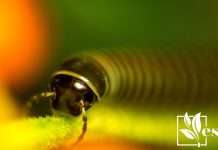As a seasoned gardener, I have often grappled with the challenge of protecting my garden from the hungry mouths of local wildlife. From meticulous planting to daily care, it’s disheartening to see plants nibbled to the ground. In my quest for a verdant and thriving garden, I’ve learned that deterring animals is about smart, humane strategies.

Key to my approach has been understanding animal behaviors and preferences. I’ve found that some methods are effective for a broad range of animals, such as creating unpleasant tastes or smells that repel without harm. For instance, a spray made from hot pepper sauce can deter nibblers, as most pests are averse to strong, spicy flavors.
Physical barriers like bird netting have also played an integral role in my gardening practice. Erected around prized plants, these nets prevent birds from feasting on fruits and foliage. I construct these barriers with care, ensuring they are not hazardous to the animals. These methods along with others – like avoiding brush piles and covering compost bins – create an environment that’s less appealing to garden pests while maintaining a healthy, respectful coexistence with the local fauna.
JUMP TO TOPIC
Selecting The Right Fencing To Protect Your Garden
In safeguarding my vegetable garden, selecting the right fence is crucial for keeping wildlife such as birds, deer, and small mammals at bay. I focus on assessing potential threats, using effective materials, and incorporating additional measures like raised beds and cloches for robust protection.
Assessing Garden Layout and Potential Threats
When I consider the layout of my garden and the nearby wildlife, it’s clear that a one-size-fits-all approach won’t suffice. To effectively deter agile deer, my fence should be at least 8 feet tall. For burrowing animals, I extend the bottom of the fence underground. I also keep an eye out for any trees or structures that could provide animals with a launch pad into my garden.
Materials And Installation Techniques For Fences
I choose durable materials that can withstand the rigors of both weather and wildlife. Heavier gauge chicken wire and hardware cloth are staples in my fencing arsenal; they’re especially useful at the base where burrowing animals might try to dig through. While installing, I make sure to bury the fence at least 12 inches below the soil to deter subterranean invaders, and I tighten the fences to prevent animals from squeezing through.
Incorporating Raised Beds and Cloches For Protection
Beyond fencing, I use raised beds lined with wire mesh at the bottom to prevent burrowing pests. The elevated soil also creates a physical barrier, making it more difficult for smaller animals to reach the plants. For individual plant protection, wire cloches offer a safe haven from birds and insects. They allow sunlight and rain to reach the plant while keeping pesky critters out.
With each step—from selecting the right materials to installing the fence and adding extra layers of defense—I tailor my strategy to the unique challenges found in my garden. This ensures that my hard work yields a bountiful harvest, free from the frustration of unwanted critter consumption.
To keep your garden pest-free, integrate plants with natural repellent properties, and employ both homemade and commercial repellent solutions that are effective and environmentally friendly.
Natural Deterrents And Repellents For A Pest-Free Garden
Utilizing Plants with Repellent Properties
In my garden, I’ve found several plants to be particularly effective at repelling pests due to their strong scents.
Marigold: The pungent smell of marigolds can deter mosquitoes and even rabbits.
Garlic: Besides its use in the kitchen, garlic can keep aphids and beetles at bay.
Rosemary: Its strong aroma keeps a variety of insects away from nearby plants.
Oregano: This herb not only complements your tomatoes but also repels many pests.
Lavender: Loved by humans, but hated by flies and mosquitoes.
Sage: If you’re looking to deter deer, planting sage can help with that.
Strategically planting these aromatic herbs around your garden creates a natural barrier against pests.
Homemade And Commercial Repellent Solutions
I’ve experimented with different repellent sprays, some homemade and others commercially produced, to find the best match for my needs.
The common ingredients in my homemade sprays include:
- Vegetable Oil: Clogs the bodies of pests.
- Soap Spray: Breaks down the exoskeletons of insects.
- Neem Oil: A natural insecticide that disturbs the life cycle of insects.
- Diatomaceous Earth: A powder that causes insects to dehydrate.
- Chili Pepper Spray: Deters pests with its intense spiciness.
- Garlic Spray: Its strong scent is a major turn-off for many pests.
Meanwhile, when choosing commercial repellents, I prefer ones labeled ‘natural’ or ‘organic,’ and I always read the ingredients. Deer repellent sprays are also handy for larger pests. These options help me manage pests without resorting to harsh chemicals.
Cultural Practices To Maintain A Healthy Garden Ecosystem
I recognize that establishing a healthy garden ecosystem is essential in naturally deterring animals from causing damage. By focusing on cultural practices, I can avoid the use of harsh chemicals and provide alternative sources of food for wildlife while promoting a balanced environment.
Alternatives To Chemical Repellents In Pest Management
When dealing with pests, I steer clear of chemical repellents due to their potential harm to the ecosystem. Instead, I implement cultural control methods which involve adjusting the way I plant and care for my garden. For example:
Crop Rotation: Variety is key. Rotating crops prevents pest populations from becoming established as each plant attracts a different set of pests.
Clean Gardening: Regularly removing debris and weeds, and maintaining a proper compost pile, reduces potential pest habitats.
Creating A Diverse Landscape To Support Natural Predators
Diversity in the garden is crucial for supporting natural predators that can help manage pest populations. By growing an assortment of plants, I create a rich, ecological tapestry that attracts a variety of animals:
Attracting Predators: Installing owl boxes and maintaining a water source in my garden invites these natural hunters, which can control rodents and other pests.
To supplement these efforts, I frequently consult with wildlife specialists who can offer tailored advice to my garden’s specific conditions, ensuring that the practices I follow contribute positively to the local ecosystem.
Innovative Techniques And Gadgets To Deter Garden Intruders
In the constant struggle to maintain a thriving garden, deploying innovative strategies and gadgets can create an effective defense system against unwanted animal visitors. Here are some specific and advanced tools I recommend for protecting your green paradise.
Motion-Activated Sprinklers And Noise Makers
- Motion-Activated Sprinklers: Startle animals with a burst of water upon their approach.
- Wind Chimes/Radio: Disrupt animals with unexpected noise, which can be variable or constant.
Physical Barriers And Perimeter Strategies
- Landscape Reinforcements: Use chicken wire, stakes, and strategic planting to create physical and psychological barriers.
- Natural Deterrents: Apply scents like urine, bar of soap, or human hair to create an invisible boundary that animals prefer to avoid.












